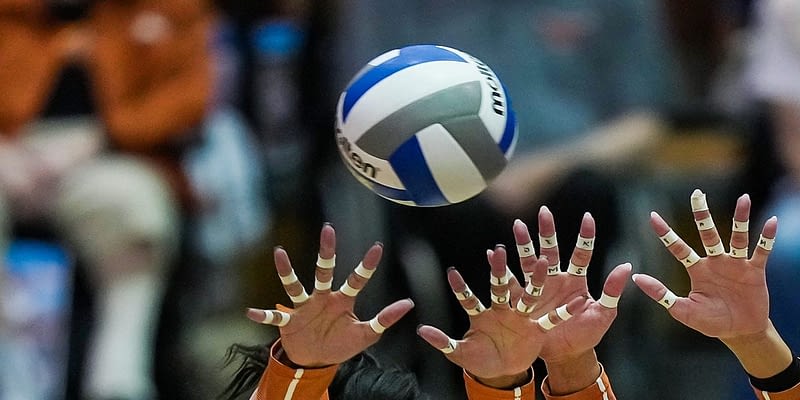Be Careful What You Wish For: The Landscape of Transgender Athlete Lawsuits Gets Complicated
San Jose State volleyball is at the center of a controversial and potentially precedent-setting legal case. What’s causing all the conversation? It’s not about an unfair loss or some epic game event—it’s about an athlete’s gender identity and whether she belongs on the same court as her cisgender female competitors.
Unfolding right now is a lawsuit filed by a group of women on the San Jose State volleyball team. Their complaint? They argue that their transgender teammate places them at an unfair disadvantage, creating a safety risk. They demand her removal from the team. The legal world is watching closely as this case could redefine how gender identity and sports coexist in competitive environments.
The Argument: Fair or Not?
The lawsuit follows what’s becoming a familiar debate in the sports world—where do transgender athletes fit? The San Jose State volleyball players say they’re not against their teammate’s rights as a person, but they are concerned about fairness and athlete safety. Specifically, they argue that differences in male and female physiology give their transgender teammate a competitive edge that is both unfair and unsafe.
It’s a tough argument. On one side, there’s the need to ensure fairness in women’s sports. On the other, there’s the desire to respect and support transgender athletes by allowing them to compete in line with their gender identity.
A Closer Look at the Lawsuit’s Details
According to the lawsuit, the volleyball players argue that their transgender teammate, who was assigned male at birth but identifies as female, has greater strength, power, and endurance. They claim this creates an unlevel playing field and exposes them to the risk of injury during games and practice sessions. The plaintiffs stress that volleyball is a high-impact sport, and even small differences in physicality can translate to serious injury when you’re spiking or blocking a ball moving at high speeds.
Read the original story here to get more of the details on this unfolding case.
The Pandora’s Box of Transgender Athlete Litigation
This case cracks open a difficult conversation that extends beyond the San Jose State volleyball court and impacts athletes ranging from college to professional levels. The plaintiffs are essentially asking the courts to redefine who is allowed to compete in women’s sports—and the implications of such a ruling could reach all of sports, globally.
Imagine for a second that this ruling is in favor of the plaintiffs. What does that mean for transgender athletes across the U.S. and potentially around the world? Would this lawsuit encourage other women in various sports to challenge the inclusion of transgender competitors? Could it lead to the exclusion of all transgender athletes based on physical traits alone?
It’s worth pointing out the broader social and legal consequences here. A ruling in favor of the volleyball players could unleash a flood of new lawsuits built on a similar argument—that transgender women retain an inherent, unfair advantage over cisgender women, even if they’ve undergone years of hormone replacement therapy (HRT), which is usually intended to minimize those physical advantages.
The Legal Precedents Set (or Not?)
The issue of transgender athletes in sports isn’t new, but there’s still no clear, universal legal precedent. Right now, cases tend to rely heavily on the details: the sport, the athlete, and the governing bodies involved. Some institutions, like the NCAA, have policies in place to include transgender athletes, with specific requirements on hormones and testosterone levels depending on the athlete’s transitioning process.
However, opponents argue that these policies don’t adequately address the physical advantages stemming from testosterone exposure experienced during puberty. Essentially, they argue that while levels of testosterone can be controlled through hormones, certain biological factors—height, bone density, muscle mass—are not as easily managed. This case could become a landmark ruling, determining more than just the fate of one volleyball team—it could be a game-changer in the future of women’s sports.
Who Stands On Which Side?
In conversations like these, the lines are often blurred between support for transgender athletes and concerns about fairness. Advocacy groups representing transgender rights have naturally come forward, arguing that their participation in sports, including at competitive levels, is a matter of human dignity and rights. Meanwhile, organizations defending women’s sports claim that transgender women, by virtue of their male biology, have clear advantages that undermine competition.
Key groups voicing their opinions in the general debate include:
- The Human Rights Campaign (HRC), which advocates for the full inclusion of transgender athletes in competitive sports.
- Fair Play for Women, a group focused on ensuring fairness in women’s sports, which aims to protect women’s divisions from male-bodied individuals they perceive as a physical advantage.
Both sides throw around intensive research and science. Some point to studies saying that even after hormone therapy, transgender women retain certain physical advantages, while others argue that the existing policies (like drastically lowering testosterone levels) effectively mitigate any significant advantage.
A Conflict of Emotions and Ethics
When discussing transgender athlete inclusion, it’s easy to overlook the human element. For the players on the San Jose State volleyball team, this is more than a court case—it directly affects their lives, friendships, and their futures in sports. Their teammate, meanwhile, now faces the painful experience of being told she doesn’t belong in the sport she loves, despite following all policies laid out for transgender athletes.
When you break it down, sports are about far more than competition. For many athletes, they’re a celebration of human achievement, teamwork, and perseverance. But when questions of fairness arise, those very values feel under threat. What happens when athletes begin to feel like their hard work and dedication are undermined by something they can’t control—the biology of their opponents?
Looking to the Future
This case is just the beginning of what could be years of escalating legal battles. With state bills being proposed regularly on the inclusion (and, in some cases, the exclusion) of transgender athletes in high school and college sports, these types of lawsuits may soon flood the courts. And the fact that this San Jose State lawsuit comes at a time when the national conversation around transgender rights and inclusion is red hot only adds to its importance.
So, where do we go from here? The San Jose State volleyball lawsuit is a snapshot of where our culture stands on one of its most heated debates. What happens in the volleyball courts of California could soon trickle down into gymnasiums, swimming pools, and locker rooms across the country. No matter the ruling, we can be sure that this discussion is far from over.
Points to Takeaway
No matter where you stand on the issue, here are a few key points to consider:
- This lawsuit challenges current rules that allow transgender women to compete in women’s sports; however, no major legal precedent has yet been set.
- If the courts side with San Jose State volleyball’s female players, this could spur even more lawsuits that seek to exclude transgender athletes from women’s divisions across multiple sports.
- Any ruling could impact not just sports culture but the broader legal landscape concerning transgender rights, fairness, and inclusion.
Sports are meant to unify people and test the limits of human potential. Yet, cases like these remind us that the framework that defines “fairness” in sports is often more complicated than it seems. As this lawsuit presses on, prepare to see riveting debates not just from lawyers and athletes, but from fans across the country as well.
For now, there’s a lot at stake, and no one knows exactly how the dust will settle. But one thing is certain—we’re just at the beginning.
Originally Written by: Nancy Armour





















